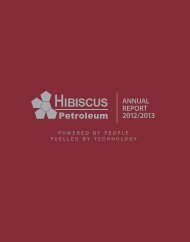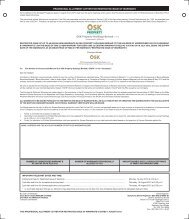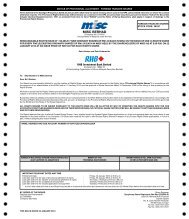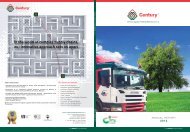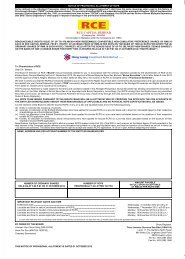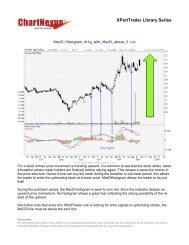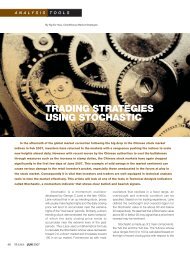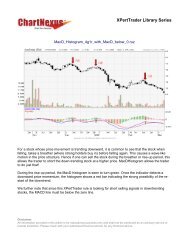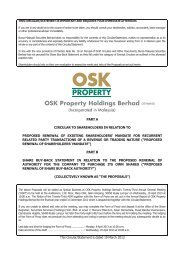L a p o r a n T a h u n a n 2 0 0 0 A n n u a l R e p o r t - ChartNexus
L a p o r a n T a h u n a n 2 0 0 0 A n n u a l R e p o r t - ChartNexus
L a p o r a n T a h u n a n 2 0 0 0 A n n u a l R e p o r t - ChartNexus
You also want an ePaper? Increase the reach of your titles
YUMPU automatically turns print PDFs into web optimized ePapers that Google loves.
Notes to the Financial Statements (continued)For the financial period of seventeen months ended 31 December 20003 SUMMARY OF SIGNIFICANT ACCOUNTING POLICIES (continued)(f)Construction contractsWhen the outcome of a construction contract cannot be estimated reliably, contract revenue is recognisedonly to the extent of contract costs incurred that it is probable will be recoverable and contract costs arerecognised as expenses in the financial period in which they are incurred.When the outcome of a construction contract can be estimated reliably, contract revenue and contract costsare recognised over the period of the contracts as revenue and expenses respectively. The Group uses thep e rcentage of completion method to determine the appropriate amount of revenue and costs to berecognised in a given period; the stage of completion is measured by reference to the proportion that thecontract costs incurred for work performed to date bears to the estimated total costs for the contract.When it is probable that total contract costs will exceed total contract revenue, the expected loss isrecognised as an expense immediately.The aggregate of the costs incurred and the profit/loss recognised on each contract is compared against theprogress billings up to the end of the financial period. Where costs incurred and recognised profits (lessrecognised losses) exceed progress billings, the balance is shown as amount due from customer on contractsunder trade and other receivables. Where progress billings exceed costs incurred plus recognised profits(less recognised losses), the balance is shown as amount due to customer on contracts under trade and otherpayables.(g)Property, plant and equipmentFreehold land are stated at cost or valuation.The freehold land were revalued by the Directors based on professional valuations carried out byindependent professional valuers. The Directors have applied the transitional provision of InternationalAccounting Standards No. 16 (Revised): Pro p e rt y, Plant and Equipment as adopted by the MalaysianAccounting Standards Board which allow these assets to be stated at their 1990 and 1996 valuations.Accordingly, the above valuations have not been updated.The surpluses arising on revaluation were credited to non-distributable revaluation reserves. On disposal ofthese revalued land, amounts in non-distributable revaluation re s e rves relating to these land will betransferred to distributable revaluation reserves.Freehold land and capital work-in-progress are not depreciated.All other property, plant and equipment are stated at cost less accumulated depreciation.Depreciation of all other property, plant and equipment is calculated on a straight line basis over theirestimated useful lives.With effect from the current financial period, the Group changed the annual rates of depreciation for all itsproperty, plant and equipment so as to better reflect their estimated useful lives as shown below:17 months Financialended year ended31.12.2000 31.7.1999Buildings 5% 5%Furniture, fittings, equipment and renovations 20% – 33 1/3% 8% – 33 1/3%Horses and ponies, stable and equestrian equipment 10% – 20% 10%Plant and machinery 20% 10%Motor vehicles 20% 16% – 20%UNITED MALAYAN LAND BHD45



